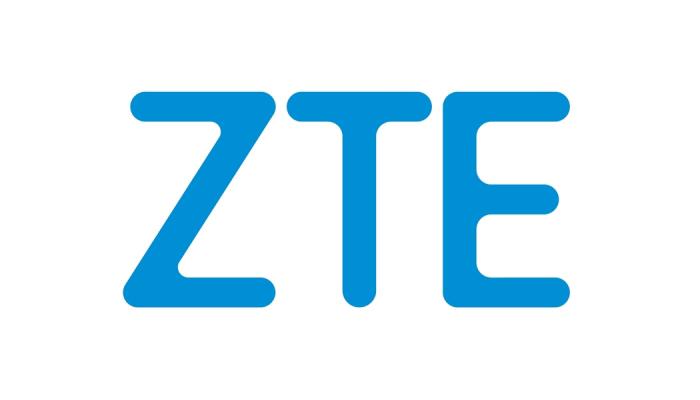
ZTE Releases Telecom Operation Strategies for the M-ICT Era
ZTE Corporation (0763.HK / 000063.SZ), a major international provider of telecommunications, enterprise and consumer technology solutions for the Mobile Internet (M-ICT), has released its strategy for telecom operators to cope with the changing face of the industry, brought about by emerging technologies such as the Internet of Things.
The M-ICT era has seen ICT technologies and Internet platforms being used by countries and enterprises for deeper convergence of traditional industries and the Internet, creating a new development opportunity. This is resulting in a change in telecom operators’ customers and markets. At the 11th analyst conference of 2015, ZTE, with 30 years' experience in ICT and serving global operators, has outlined strategies to help telecom operators seize opportunities in this new era, and provide customers with better services.
Han Ling, ZTE's vice president, said, “Three peaks will appear as the total mobile broadband traffic consumption grows. First, as the traffic consumption of individuals grows towards mobility, mobile Internet users will overtake fixed users to become the Internet’s primary users. Second, as the intranet traffic consumption of enterprises grows towards mobility, mobile workforces and bring your own device (BYOD) will become increasingly popular as the development of LTE scales. Third, as data communication develops from person-to-person to person-to-machine and machine-to-machine, the number of network connections will reach 50 to 100 billion, and the mobile Internet of everything will become a reality. During the growth of mobile broadband traffic consumption, the ability to provide ubiquitous access, elastic network, and digital service is vital for telecom operators.”
Mobile networks must develop in order to cope with the rapid growth of mobile traffic consumption. In 2014, ZTE announced its Pre 5G concept, in which mature 5G technologies are deployed on 4G networks before 2020 to upgrade existing networks and to cope with challenges brought by rapid data traffic growth. Pre 5G consists of four key technologies: Massive multiple-input multiple-output (MIMO), Pre5G user densification network (UDN), multi-user shared access (MUSA), and integrated software defined networks (SDN). At Mobile World Congress 2015 in Barcelona, ZTE released its industry-leading Pre5G 3D Massive MIMO pre-commercial base station. This base station increases spectrum efficiency by 4 to 6 times, achieves accurate 3D beam forming, and is completely compatible with current commercial 4G terminals.
5G's key features, such as experience rate of 100 Mbps-1 Gbps, traffic density of 10 Tbps/km2 at hot spots, millions of connections per square kilometer, low delay, and high liability, will meet people's requirements on high traffic density, connection density, and mobility. 5G network construction will greatly reduce energy consumption, increase operational cost efficiency, improve service innovation capability, and expand space for telecom operation industry.
ZTE believes that key to the development of a telecom network is to construct a horizontally-layered and software-defined elastic network that supports integrated control and unified management by introducing SDN/network function virtualization (NFV) architecture, IP and optical network convergence, and content delivery networks (CDN)/enhanced service choreography capability. As the information architecture continuously evolves, the convergence of cloud and tube becomes the core feature of an elastic network.
Over the next few years the levels of mobile traffic will gradually exceed that of voice/SMS messages and become telecom operators' main source of revenue, driving telecom operations to enter digital service development stage. With the long-term development of home, government, and enterprise customers, the proportion of revenue from such customers will increase. In addition, the cross-industry application of the Internet of Things (IoT) and big data will arise, further driving the transformation of telecom operations.
Traffic operation is the core of digital service. Layered data traffic with different content should be provided for individuals and enterprises with different levels of needs. As a result of this, ZTE has stated that based on its home, government, and enterprise customers, telecom operators should expand their service areas from multiple aspects by focusing on digital services and further refining traffic operation to increase network values and gain profits.
Digital services for home customers cover two areas: home theatre and entertainment, and the smart home. In home theatre and entertainment, ZTE recommends that telecom operators accelerate service upgrades and enrich service applications by integrating OTT with IPTV. In the smart home area, telecom operators should develop innovative services such as home security and home automation while focusing on the control of entry points for cloud service platforms and mobile phone apps.
Telecom operators can gain competitive advantages over competitors by building an enterprise-oriented mobile network, providing integrated services that meet enterprise information requirements, entering the global IT outsourcing market, and developing enterprise-oriented cloud services. Meanwhile, during the construction of a smart city, a telecom operator can stay ahead of its competitors by building an operation center with ICT technologies, such as IoT, cloud computing, and service-oriented architecture (SOA), as the unified application framework for the smart city.
ZTE’s strategy for telecom operators to make a breakthrough in cross-industry markets is to improve standards and establish an IoT service support platform, based on the existing network resources, as the core platform. The mining or application of big data has instigated the development of telecom operators’ services, helping to improve operators' efficiency, achieve accurate marketing, and realise data value.
Han Ling, ZTE's vice president, added, “Unprecedented connection demands will appear in the M-ICT era. Ubiquitous network connections with high speed, good quality, but low prices will become basic demands, and data traffic will become as fundamental a consumer good as water or electricity. Enterprises will achieve great development in the M-ICT era if they are bold enough to make innovations while considering customer demands. ZTE Corporation will provide its ‘ubiquitous access, elastic network, and digital service’ telecom operation and network evolution concept to help telecom operators’ realise their network values and make key breakthroughs.”


























